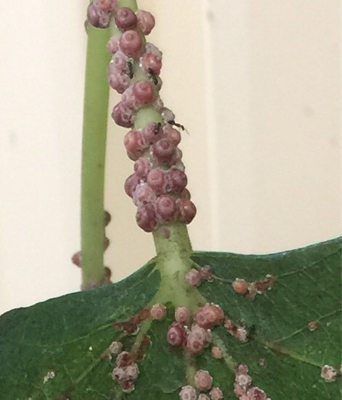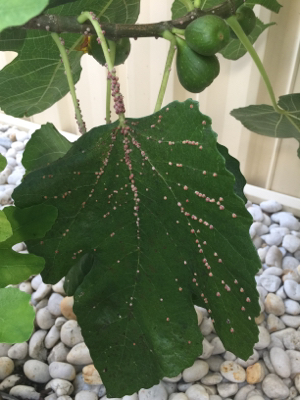By request. This was posted on a forum YEARS ago.
Over the course of my gardening years I’ve been given a recipe here
and there to aid in my quest to rid my plants of pests naturally.
While I try and be as organically responsible as I can, I find no harm
in using some of my everyday cleaning supplies as tools to help me
reach my goal. So when the aphids were sucking the life out of my
newly planted container gardens, I ran to my files to see what I could
scrounge up.
Ok, strong sprays of water at all affected plants and then take a
spray bottle filled with a solution of homemade insecticidal soap:
Two Tablespoons of Dawn dishwashing detergent in one gallon of water
will make a hefty supply for houseplants but you may need to mix up a
few gallon milk jugs for those areas where you have a lot of ground to
cover. This recipe can be broken down further to:
1 ½ teaspoons of Dawn liquid detergent per one quart of water.
This mixture should assist you with the removal of mites, whiteflies,
aphids, thrips small scales and leafhoppers. This recipe has a very
low toxicity to wildlife and humans but should not be applied on a
sizzling hot day, windy, or humid. It can burn some plants with dull
leaf surfaces so always test a non-visible area before you attack the
whole plant or growing section.
Scale can be attacked with this recipe which when mixed with the
alcohol will penetrate the adult scale insects’ shells which will kill
them soon after contact. Scale is a problem with many houseplants.
Take the plant outside for a quick spray or do it in the bathtub.
Mix one cup of your generic isopropyl alcohol, that you can find at
most any store in the first aid section or the like, with one
tablespoon of the above insecticidal soap recipe (1½ teaspoons of Dawn
to one quart of water). Mix those two ingredients with one quart of
water and apply on your plant’s leaves (top and bottom) every three
days for two weeks.
The last recipe can be used to spray on those plants that you want to
bring inside for the winter.
Put three tablespoons of isopropyl alcohol in a spray bottle (quart
size, which you can find at most bulk warehouses or any mass
merchandiser) and fill with lukewarm water. Add one teaspoon of Dawn
dishwashing detergent. Spray the topside and underside of the leaves
and let it sit for three minutes, rinse all the leaves thoroughly and
let them dry outside.
At the end of the day, all homemade insecticidal recipes make me feel comfortable about what I’m spraying onto my plants and into the environment. I’m not out to kill the “good” bugs that protect my plants, only the ones that do them harm. There is one commercial brand that I have used without any ill effects and that is Safer’s. The important thing is to use as many natural methods as possible with the least effects even if they don’t work as quickly as a strong dose of a chemical insecticide. The verdict is still out on some safety issues and this way I can sleep better at night.


